The Center for Water-Energy Efficiency (CWEE) identifies, develops, and tests innovative technologies and practices for aggressive improvements in water-energy efficiency; designs policies and outreach activities that facilitate market access and penetration of innovative water-energy conservation strategies and technologies; and serves as a collaborative hub for universities, industrial partners, and government agencies to advance water-energy research, education, technology development, and policy assessment.
Key Accomplishments 2016
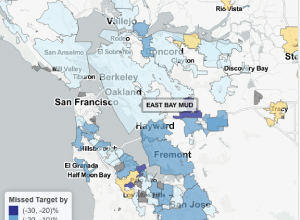
Awarded Runner-up in Green Gov Data Challenge
The State Water Board hosted a data challenge in the Spring of 2016 with a focus on creating apps, visualizations, and other tools that demonstrate the use of publicly available data beyond its current utilizations. The CWEE team, led by Data Scientist Andrew Holguin, received runner-up in the California Green Gov Challenge for their application CA H2Open. The CA H2Open application creates a visualization of how the 400+ California water utilities responded to the Governor’s mandate of a 25% reduction of statewide water use in urban water suppliers relative to 2013 levels. In addition to displaying a summary of water use relative to the conservation target for each district, the application also calculates the electricity savings associated with the reduced demand on water infrastructure services. One of the significant findings is that the embedded electricity savings associated with the observed achievements in water conservation is roughly equivalent to the total first-year electricity savings estimated for all of the investor owned utility energy efficiency programs implemented from July through September 2015 (the period where data was available for both initiatives). This application can be found at: https://cwee.shinyapps.io/greengov/.
“I think one of the biggest lessons for me and others in the state as we begin to think about the path forward is the real potential to invest energy efficiency money into water conservation.”
—Frank Loge, Director, Center for Water-Energy Efficiency
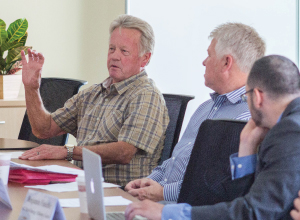
Hosted Water and Energy Data Security and Privacy Workshop
After performing a handful of energy intensity studies for California utilities, the Center found that policies and procedures were needed to streamline data sharing contract negotiations and customer data aggregation. Currently, each entity has its own procedures and policies on how it acquires, aggregates, and shares customer data to outside entities and undergoing individual negotiations across 400+ water utilities is not feasible. With the support of the S. D. Bechtel Jr. Foundation, the Center put together a two-day workshop to hear from water and energy industry leaders in the state, federal, and private sectors on streamlined solutions to share data more widely, while retaining necessary privacy and security standards. Workshop participants agreed that streamlining water and energy use data and contracts between agencies would be an important step toward resource use efficiency and ensuring drought resilience in California. Participants also acknowledged that maintaining customer privacy within trusted parameters was essential. As a next step, the Center will bring together a consortium of stakeholders to pilot the trusted data platform CWEE has been developing.
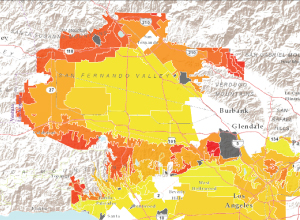
Completed Los Angeles Department of Water and Power and Los Angeles Sanitation Bureau Energy Intensity Analysis
The water sector is an emerging target for energy efficient efforts in the State of California as it is estimated that 20% of the state’s electricity and 30% of non-powerplant natural gas is used to move, treat, and heat water. CWEE developed a methodology for managing big utility data and analyzing the high resolution energy intensity (EI) of water systems across multiple spatial and temporal scales in order to provide customized recommendations for water utilities. In 2016, the Center completed an energy intensity analysis on the nation’s largest municipal water and energy utility and wastewater system. The Los Angeles Department of Water and Power and the Los Angeles Sanitation Bureau each cover 473-515 square miles and approximately 4 million customers with some overlap in territory. With the EI assessment, both agencies have visualizations on high EI pressure zones in order to roll out customer energy efficiency programs, target high EI zones for infrastructure upgrades, and apply decision making to offset pumping during peak energy demand.
“The water sector is an emerging target for energy efficient efforts in the State of California as it is estimated that 20% of the state's electricity and 30% of non-powerplant natural gas is used to move, treat, and heat water.”
Key Projects 2017
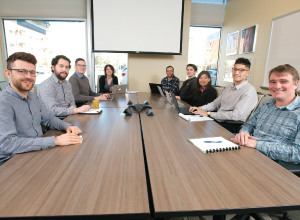
Develop a Secure Data Platform
In partnership with Microsoft Corporation Inc., and in consultation with the UC Davis Office of the Chief Information Officer and the College of Engineering IT Department, CWEE is in the process of creating a cloud-based data privacy and security platform that meets the strict requirements of the National Institute of Standards and Technology (NIST). The platform will enable CWEE to obtain private data, such as customer level electricity data, for research. This is the first step in developing a trusted data platform for sharing utility data.
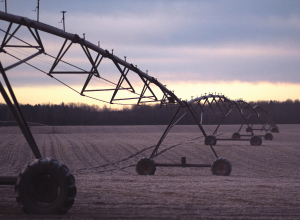
Complete Project on Agricultural Water-Energy Optimization for California’s Farms
The Center will be wrapping up a California Energy Commission (CEC) and Wexus Technologies project this year. The goal of the project is to tailor water-energy optimization to specific California farms by: 1) creating a network map of the agricultural irrigation distribution system for each grower that would generate a GIS map of energy intensity (EI) for specific farm zones; 2) inform growers of optimum crop irrigation by integrating a common methodology into the existing Wexus app that factors in evapotranspiration, rainfall, crop type, and growth stage; and 3) design data visualizations and a benchmarking tool to communicate to growers their efficiency compared to other similar farms.
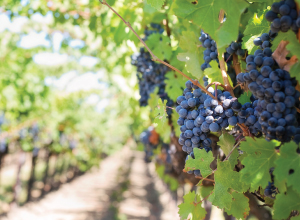
Increase Winery Water-Energy Savings
The California Energy Commission (CEC) is sponsoring a project at the Center to test the water-energy efficiency of two technologies on-site at Jackson Family Wines in Sonoma County. The proposed technology demonstration and deployment project will integrate two efficient technologies: (1) reverse osmosis water treatment to treat wine barrel wash water to potable standards; and (2) wine-to-wine heat exchangers to both heat and cool the wine as needed to stabilize and prevent crystallization of white wine. Widespread adoption of indoor water reuse in the commercial and industrial sector has proved challenging largely due to the permit requirements in California. This project aims to increase widespread acceptance of indoor water reuse in the food and beverage industry by highlighting technology benefits and publicizing effective strategies for designing and navigating the challenging permitting process.
“The Center aims to increase widespread acceptance of indoor water reuse in the food and beverage industry by highlighting technology benefits and publicizing effective strategies for designing and navigating the challenging permitting process.”
For more information, please visit the Center for Water-Energy Efficiency.

